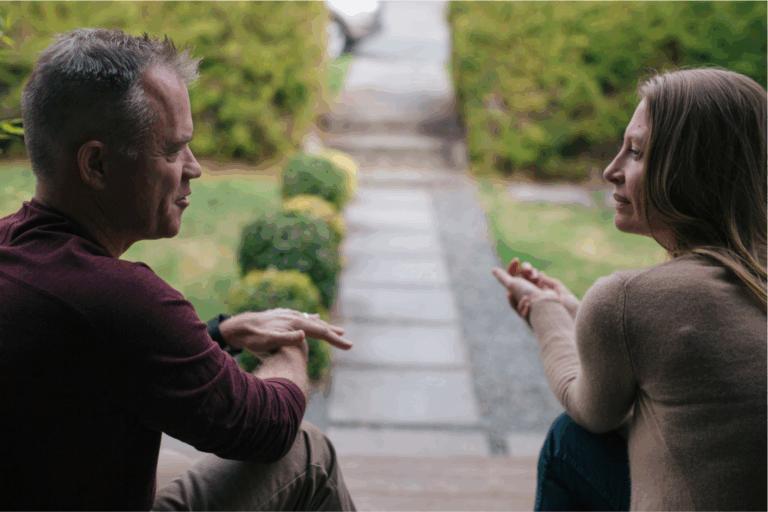Coercive control. It’s a form of domestic and family violence that can be hard to put your finger on – and that’s exactly what makes it so dangerous. It often starts with something small; your partner asking you to stay home instead of going out with your friends, because they’ll “miss you too much” when you’re gone or dismissing your legitimate concerns because you’re being “over-sensitive”.
These minor red flags can soon snowball into a pattern of psychological abuse – controlling your finances; tracking where you go and who you see; isolating you from your friends, family and colleagues; calling you worthless and unlovable.
From July 2024, coercive control became a criminal offence in NSW. It’s critical we all understand the signs so we can recognise it in our own relationships and in people close to us.
What is coercive control?
Coercive control is a form of domestic abuse, involving the ongoing or repeated pattern of controlling another person’s behaviour. This type of abuse isn’t always physical; it commonly consists of emotional or mental tactics to isolate, manipulate, threaten and control a person.
These actions can be subtle and hard to identify, but they cause just as much harm as any other form of domestic and family violence. While it’s more common in romantic relationships, coercive control can be present in other familial or platonic relationships, where ultimately an uneven power dynamic is created.
The word ‘coercive’ concerns the use of threats or force, whether physical, emotional or financial. These behaviours may seem minor on their own, but when repeated or continuous, they accumulate and can be psychologically harmful. Such patterns of oppressive, threatening behaviour are usually difficult to recognise immediately, as they’re intended to control and minimise someone’s thoughts, feelings and actions.
What are the signs of coercive control?
What makes coercive control so damaging is that the person may often not even realise they’re being manipulated. The actions are often subtle and nuanced, but there are common signs and behaviours that can help you to recognise controlling tactics.
Isolation from support systems
Reducing or cutting contact from someone’s friends and family can be used as a deliberate control mechanism. A person using coercive control will often seek to reduce the number of external factors in the relationship, making it easier to control who their partner is speaking with and what they’re listening to, and slowly increasing the other person’s dependence on them instead.
Keeping someone away from their support network can also involve jealous accusations. The person using coercive control might attempt to make the person feel guilty when they spend time with their friends and family. This display of possessiveness or suspiciousness is often disguised as a gesture of love.
Denying freedom and independence
Diminishing someone’s autonomy is another method of control an abuser can utilise. This might include not allowing the person to go to certain events or be alone with anyone else. Preventing them from attending family events or social functions by using guilt is common, as is making fun of their interests to discourage them from enjoying activities outside of the relationship.
A person using coercive control can further limit someone’s independence by monitoring their activity using devices installed in places like cars or phones. This might also include reading emails, messages and other private documents, like financial statements, without permission.
They can also control someone’s online presence by insisting on using a shared phone or social media account, or physically moving far from family and friends to reduce contact. Coercive control can also manifest in the form of texting or calling excessively when apart.
Mental and psychological tactics
Coercive control will eventually wear someone down emotionally. A person using coercive control criticise their partner or engage in name-calling or belittling to humiliate and degrade them. This abuse ultimately demeans and diminishes an individual’s self-esteem, making them question their confidence and making it more difficult to leave.
Another subtle, yet common, emotional tactic is gaslighting. Motivated by the desire to control another person, a gaslighter erodes their victim’s confidence by leading them to constantly doubt their own sanity, memory, intelligence and self-worth. This causes the victim to rely more on their partner, as they start to question and ignore their own emotions and sense of self.
Verbal and physical abuse
Continued criticism and harmful language are never acceptable, particularly when children are around. Verbally or physically threatening children, pets or other members of the household is another sign of coercive control in relationships.
And while it’s not always present in relationships that use coercive control, physical attacks and abuse can also occur. This can include sexual abuse, where the user of violence may make demands about when or how often sex takes place, or what types of activities are performed.
Control over money and appearance
Controlling finances or limiting access to money is a common practice of coercive control, making it even more difficult for the victim-survivor to leave the relationship. This type of abuse can involve keeping someone on a budget, monitoring what they spend, limiting access to accounts or insisting on seeing financial information. Withholding or limiting access to money is also common conduct, especially when children are involved.
Dictating aspects of someone’s body and health is another method of establishing dominance and authority, like controlling how much the person eats and exercises or forbidding certain clothing and makeup.
These signs are by no means exhaustive – know that everyone’s experience of coercive control is different, and there could be other behaviours present. If something doesn’t feel right, trust your gut and seek some professional support.
Who is most at risk?
Coercive control is most pervasive in domestic and family relationships, but manipulative tactics can be present in all different types of relationships. Whether you’re casually dating, in a serious relationship or even separated, controlling behaviour can arise at any stage in a relationship. Coercive control isn’t exclusive to romantic relationships – it can also be rampant in familial or carer-patient relationships.
Everyone’s experience is different but, while there are many different signs of coercion, its effects are largely the same. This manipulative and oppressive behaviour can create invisible chains that are difficult to break and instil a sense of fear and anxiety that can permeate into all aspects of someone’s life.
What makes it even more difficult is the fact the person using violence usually tailors the controlling behaviour to the person they’re abusing, as they often have intimate knowledge of that person. The abuser commonly uses a combination of controlling behaviours which can change and culminate over time.
Accessing support for coercive control
If you feel that you or someone you know is experiencing coercive control, know that you’re not alone – there are plenty of places you can turn to for professional support.
Remember, in an emergency, you should always call 000.
- Contact 1800 RESPECT (1800 737 732) 24 hours a day, seven days a week. You’ll be listened to and offered guidance to help keep you and your family safe.
- Book an appointment with your trusted GP or health professional. Through support services like our Care and Connect program, they can confidentially put you in touch with a range of vital services.
- Women’s Choice and Change is a free domestic and family violence support group for women who currently feel or have previously felt powerlessness as a result of experiencing a range of controlling and abusive behaviours.
- Taking Responsibility is a behaviour change program for men who are looking to overcome a history of abusive behaviour towards their partner, and make positive changes in their lives and relationships.
It’s also important to keep looking after yourself, as much as you can. Maintaining a trusted support network will give you a sense of safety and community when you need it. Talking with people you trust who are outside of your relationship will help you gain perspective and can provide a safe space. Check in with your network regularly and make sure your friends and family have your contact information.
Relationships Australia NSW offers relationship counselling services, as well as domestic violence support programs for both men and women.
Related Services & Workshops

Group Workshops.Individuals.Trauma
Women’s Choice and Change
This program is a free domestic violence support group for women. Our family therapists provide a safe and caring space to share and learn from others who understand your experiences. Skills and strategies are provided to help you move forward with your life.

Counselling.Individuals.Trauma
Domestic Violence Counselling
We all have the right to feel safe. Taking the first steps to speak to someone about domestic and family violence can be conflicting and overwhelming. At Relationships Australia NSW, we provide compassionate, understanding, and confidential domestic violence support for victims.

Tailored Services.Individuals.Trauma
Care and Connect – Domestic, Family, and Sexual Violence Linker Program
Free, safe and confidential support to people who are experiencing domestic, family, or sexual violence, including child sexual abuse, in the Blue Mountains, Hawkesbury, Lithgow and Penrith Regions. Referrals via local GP or health professionals.






